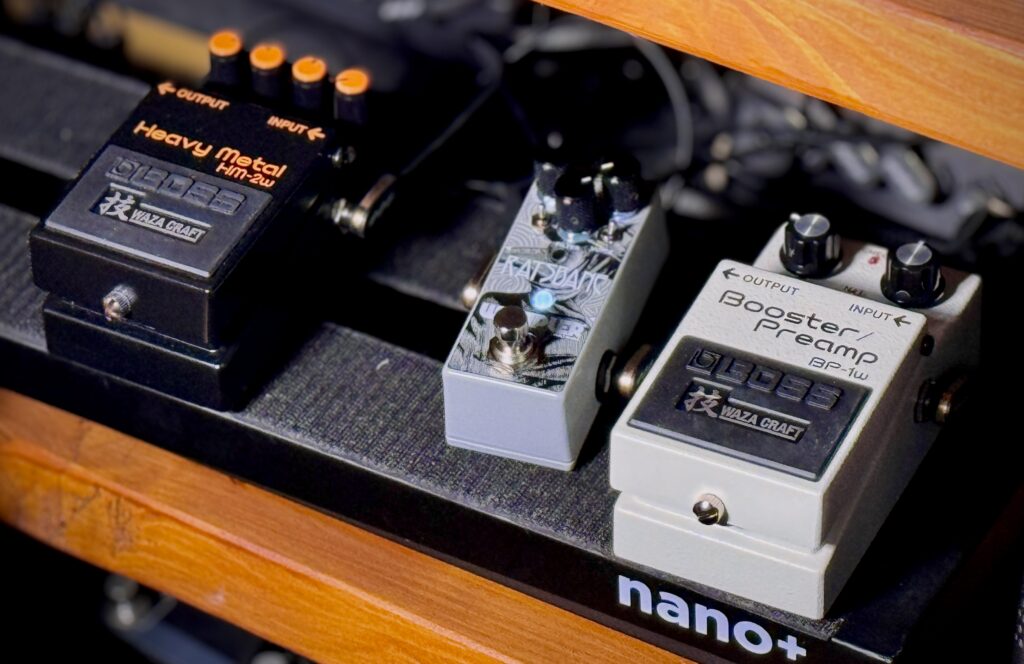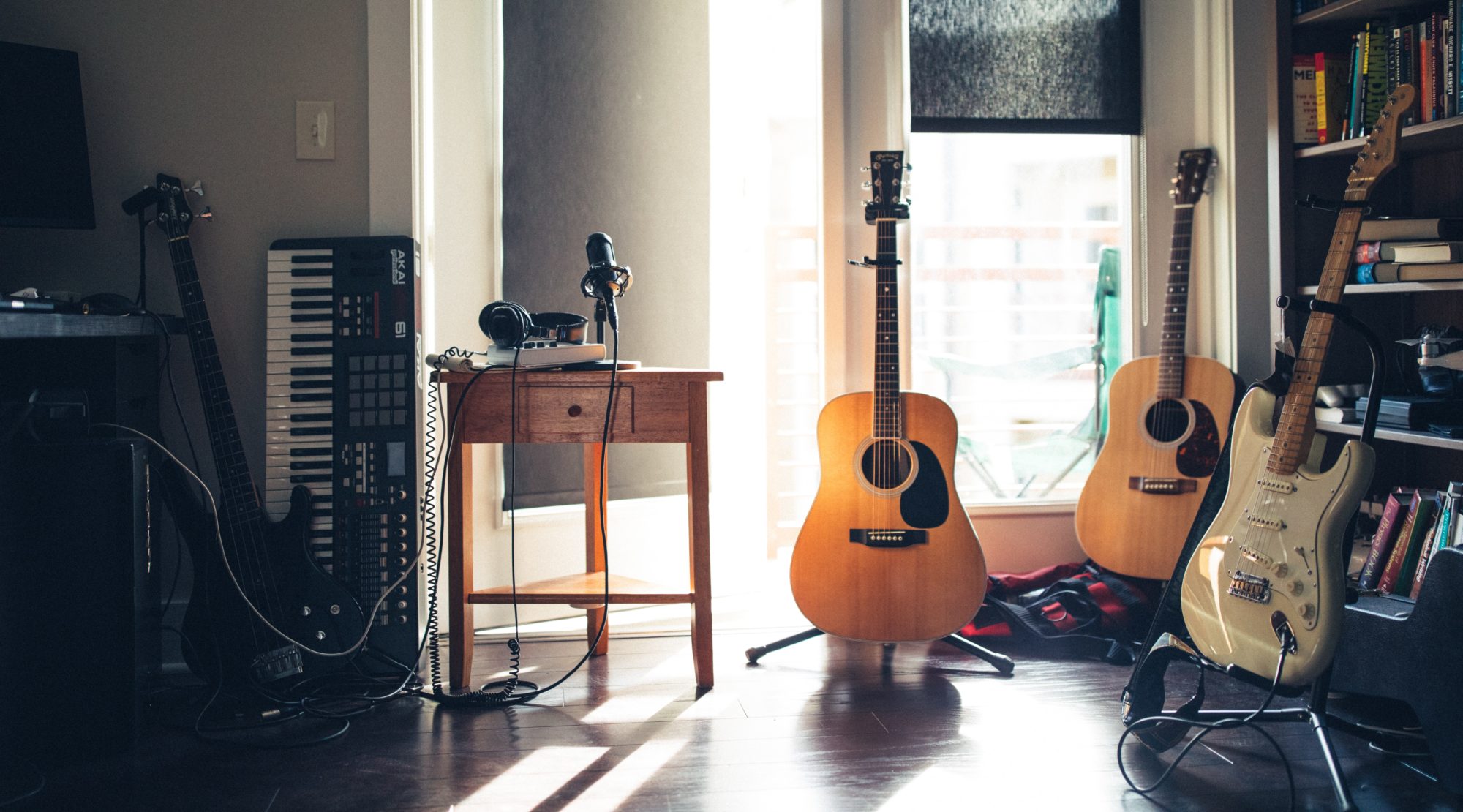Back in January, I got a Wampler Ratsbane distortion pedal.

This pedal really does it for me. Why? Read on for my First Impressions.
What Did You Get?
I got a Wampler Ratsbane distortion pedal. It was a gift from my wife, Kristi. She bought it brand new.
The Ratsbane is Brian Wampler’s take on the iconic ProCo Rat distortion pedal. The Rat is arguably the sound of 80s hard rock and hair metal.
Wampler’s version of this circuit includes toggle switches to select between three different gain modes, and to select between two different voicings.
Why Did You Get It?
I’m not into playing hair metal classics at all, so why did I ask for one?
In a word: curiosity. I had a lot of fun with the Boss HM-2w Heavy Metal pedal, and I wanted to find out what kind of tones I could get out of a Rat-style pedal. It’s a type of pedal that I don’t have any real experience with. I’d like to change that.
I’ve been looking at the Jam Pedals Rattler a lot too, and had both down on my gift wish list. Unfortunately, the Rattler has jumped in price a lot recently, while second-hand examples have become quite rare.
The Ratsbane has the distinct advantage of being far more available and far more affordable at the time of writing.
How Does It Sound?
I’ve put it onto my little home pedalboard, and I’m running it straight into my usual Axe-FX 3 signal chain.
Taming The Top-End
Right off the bat, this pedal took my head off. That’s to be expected: it’s a Rat at heart, and that circuit seems to come with a very cutting top-end. However, with a few simple tweaks, this pedal absolutely shines.
On the pedal, the top-end can be tamed by turning up the Filter control. I found the sweet spot to be quite small, and it needed tweaking for each individual guitar that I tried. That’s not meant as a criticism; as a home player, I don’t mind having to do this if it gets me (what I think is) the best results from the pedal.
With single-coil bridge pickups, I also found that I preferred rolling the guitar’s tone knob down a little just to smooth the top-end a bit more. It didn’t work with every guitar I tried; some guitars ended up sounding dull rather than smooth because they lost too much treble too quickly.
Finally, I did the same trick that I did with the HM-2w, and ran it into a dirty amp (which I believe can tame the top-end by forcing it to compress?) … and oh yes.
This Pedal Needs Winding Up To Come Alive
I like relatively low-gain rhythm tones. That’s my thing. My idea of a dirty rhythm tone is pretty much a professional session guitarist’s “clean tone”. And this is one area where the Ratsbane struggled on its own.
I found that the pedal sounds lifeless and dull on its own with the Gain control wound down. It didn’t seem to come alive for me until the Gain control was up around 10 o’clock or higher. That was too much gain for my style, but damn if it didn’t sound great though!
Paired With A Boss BP-1w Booster For Happy Days
So I cheated, and put my Boss BP-1w booster (in RE mode) in front of the Ratsbane. The extra push from the BP-1w allowed me to turn down the Ratsbane’s Gain control to around 8 o’clock, giving me the lower-gain rhythm tone that I wanted without the pedal losing all musicality and responsiveness.
The RE mode on the BP-1w also helped smooth the top-end out even more and fatten up the low-end quite a bit.
Not Scooped, But Sounds Even Better With Mids Cranked On The Amp
This one’s a weird one. I don’t really understand why this works, only that I like the results.
To my ears, the Ratsbane doesn’t sound like a modern heavy tone. It’s got plenty of energy in the upper-mids. But when I run it into a blackface-style amp (which itself is a bit mid-scooped), I found it did sound a little thin.
I switched over to the cranked Marshall JTM-45 model on my Axe-FX 3 (the dirty amp mentioned earlier on), and that sounded fuller, but still not thick. Then I cranked up the Mids on that amp … and couldn’t stop grinning for the rest of the day.
The Perfect Companion For My Silver Sky
The grin only got wider when I tried this with position 2 (middle and bridge pickups) on my PRS Silver Sky. Sounds nothing like a Strat, sounds nothing like a Marshall.
- The classic Marshall / Rat sharp attack (perfect for hard rock and metal) has become soft and rounded (but not like a tweed amp).
- Chords are smeary and fuzzy, but the note separation is still there if I pick carefully.
- Single notes sound bigger, but (at this low-gain setting) not creamy and saturated.
The thing growls. I don’t recall ever making a Strat growl before. (Some) Les Pauls, sure, but a Strat? Especially on the bridge pickup?
And, if I want to clean it up a bit for a clean tone, I just switch over to position 3 (middle pickup only), and maybe roll back the volume pot a tiny bit.
Some Example Audio
Here’s how the Ratsbane sounds on the middle position of my PRS Silver Sky:
and here’s how it sounds on position 2 of my PRS Silver Sky:
Not very hair metal 🤘 (but in a great way!)
It doesn’t just sound great with my PRS Silver Sky. If I grab Mirage (my Fender Journeyman Telecaster) and try that in the middle position, I get a great complementary sound:
Timing Is Everything
I’m feeling very fortunate that I didn’t get the Ratsbane before now. If I had, things would have turned out quite differently.
- If I’d had the Ratsbane before I had the Boss HM-2w, I would never have tried running the Ratsbane into a cranked Marshall amp (model).
- If I’d had the Ratsbane before I had the Boss BP-1w, I would never have found the fatter lower-gain tone that suits my style.
- If I hadn’t picked up my Silver Strat before I got the Ratsbane, I would have just stuck to 80s hair metal tones with humbucker-based guitars.
Although a pedal is a discrete item, it doesn’t exist in isolation. Although modular, gear isn’t interchangeable. It goes into a signal chain, and that signal chain is shaped by other bits of gear and my experiences in the past.
It’s as much about ‘when’ as ‘what’.
Final Thoughts
When I did the first draft of this blog post, I ended up spending an entire evening playing my Silver Sky through the Boss BP-1w (RE mode) & Wampler Ratsbane into a cranked JTM45 amp model. I didn’t need to touch the pedals or the amp once; I simply sat there and played.
I’m more than sold on this pedal (as part of this signal chain). I think that I’ve found my #1 guitar tone for my Silver Sky. I won’t know for sure until I’ve tried recording with it, but certainly in the room, it’s giving me everything I want.
And I think I know why.
This signal chain is giving me Marshall Origin vibes (in a good way). It’s got that ill-defined drive sound that I always loved about that amp. I was really big on my Marshall Origin when it first came out, and I think that’s why this feels like home to me. (I’ll have to setup an A/B comparison at some point.)
